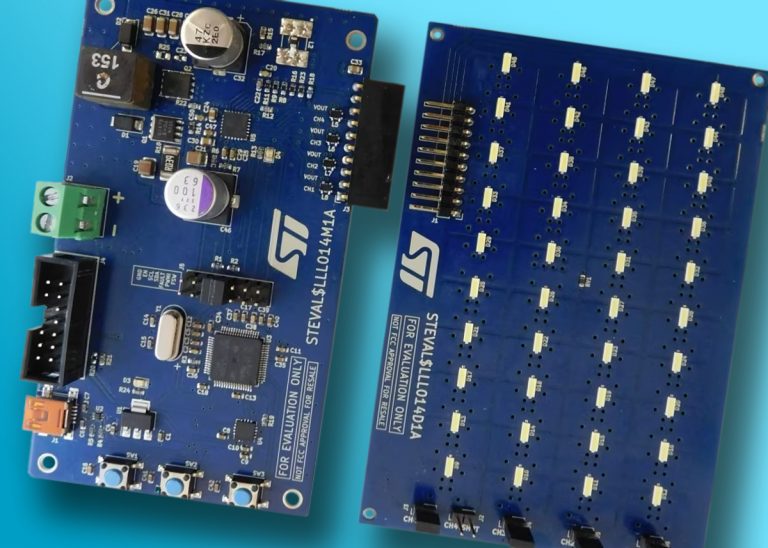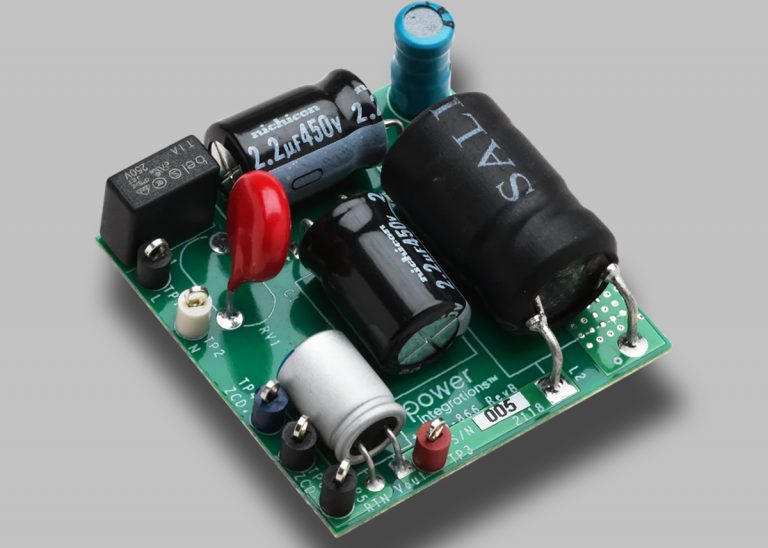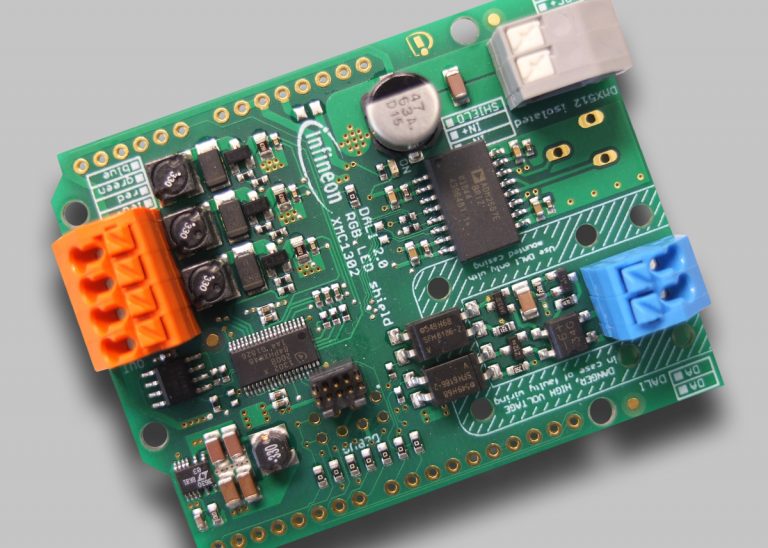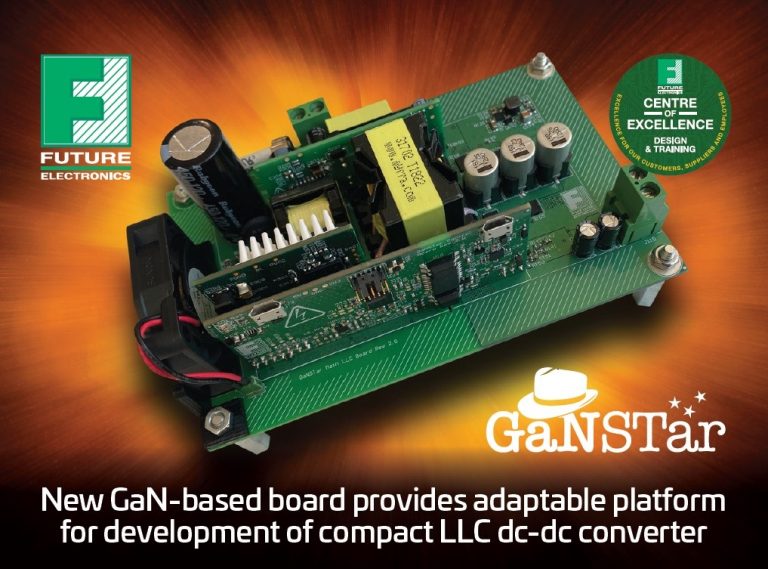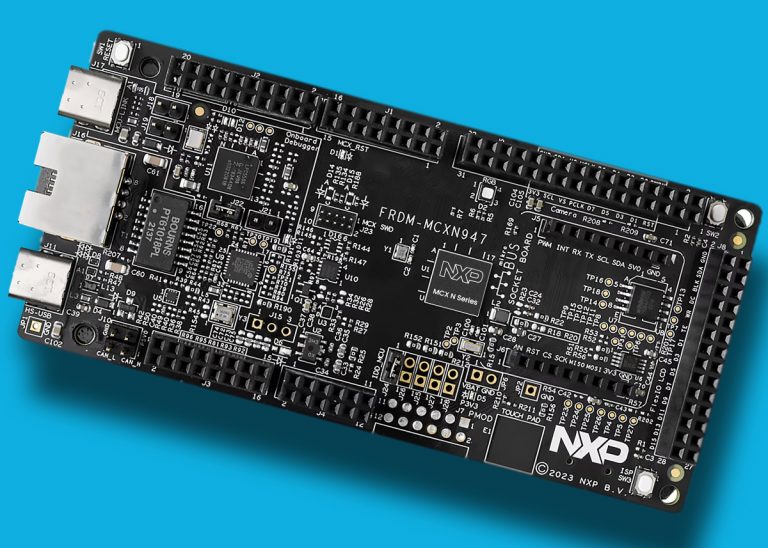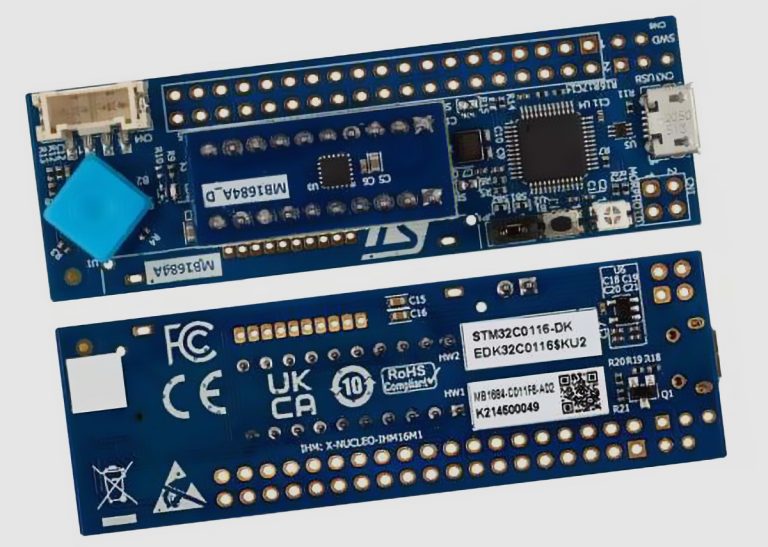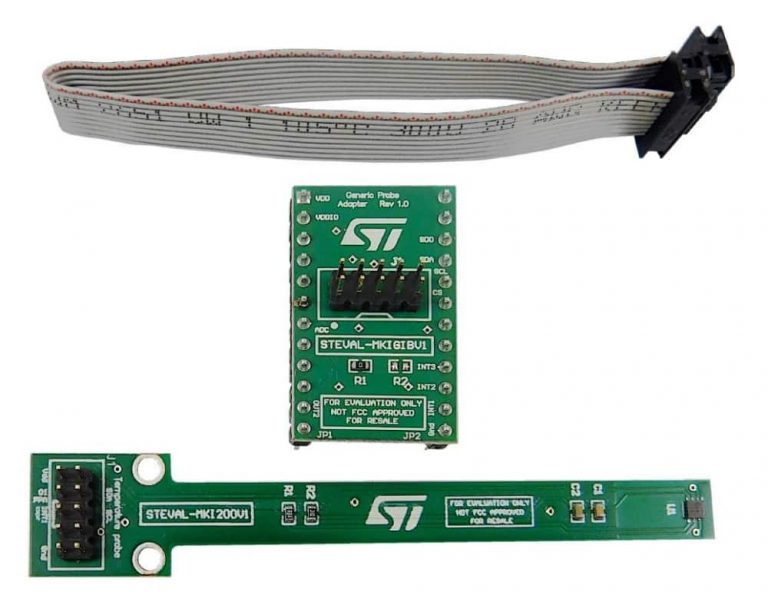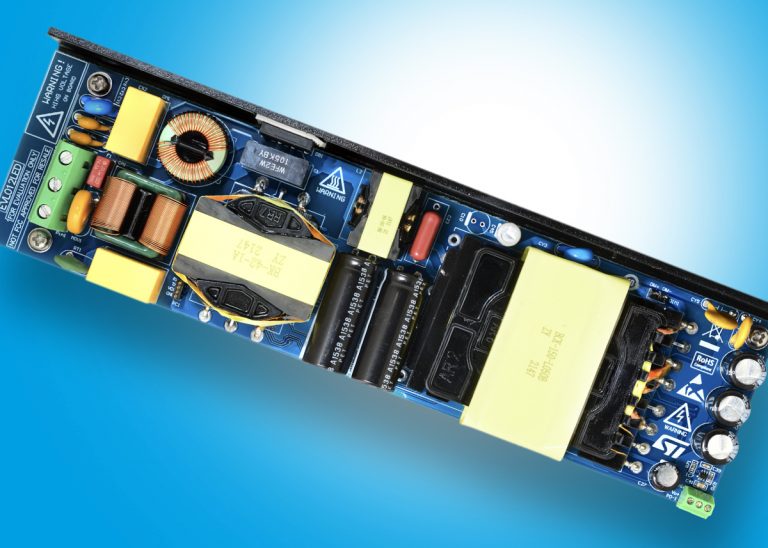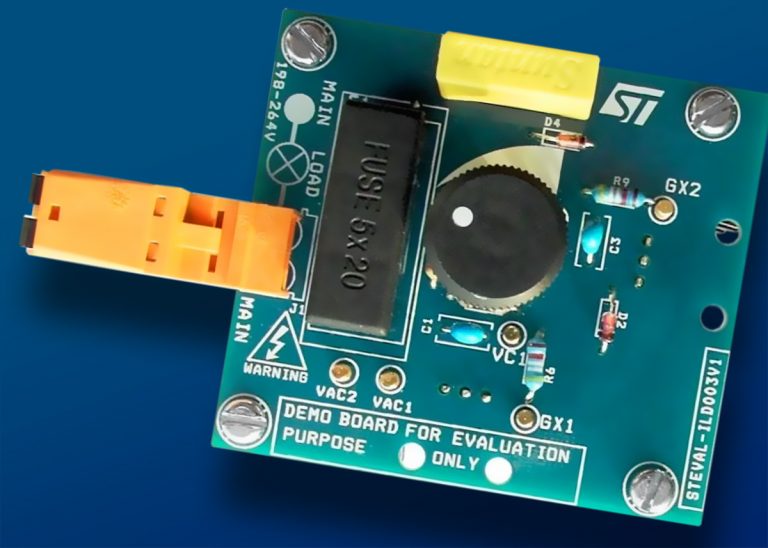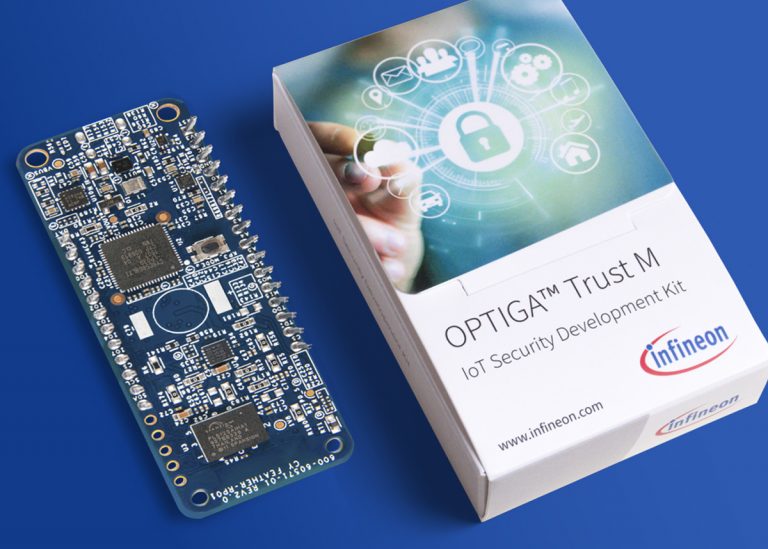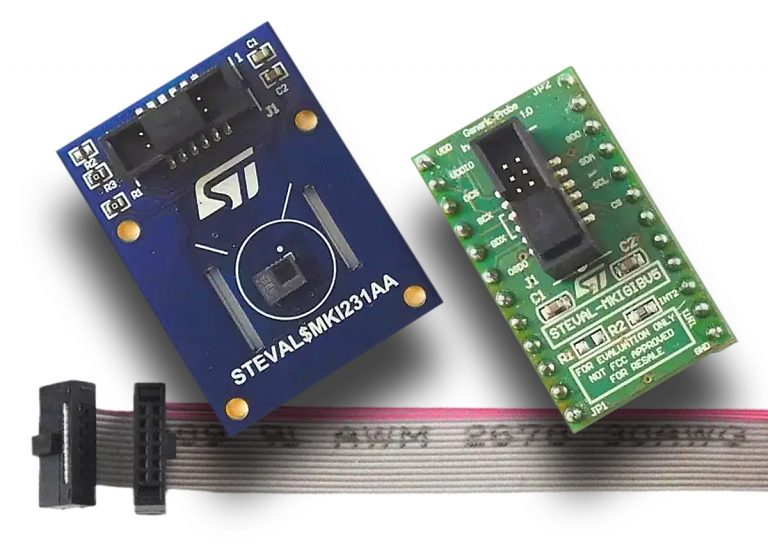The STEVAL-MKI231KA demonstration board provides a hardware platform for evaluating the STHS34PF80, an infrared motion and presence-detection sensor from STMicroelectronics.
The demo board is connected through flat cable to a generic adapter board, the STEVAL-MKIGIBV5, to make it compatible with the STEVAL-MKI109V3 microcontroller board. An ad hoc plastic holder with a Fresnel lens (TMOS63-10) has been provided in the kit to enable the designer to verify the in-application performance of the device.
The STEVAL-MKIGIBV5 can be plugged into a standard DIL 24 socket. The kit supports the complete STHS34PF80 pin-out, and comes ready-to-use with the required decoupling capacitors on the power supply line.
This adapter is supported by the STEVAL-MKI109V3 motherboard, which includes a high performance 32-bit MCU functioning as a bridge between the sensor and a PC, on which it is possible to use the downloadable graphical user interface, or dedicated software routines for customized applications.
It is also possible to plug the board into an X-NUCLEO-IKS01A3, X-NUCLEO-IKS02A1 or X-NUCLEO-IKS4A1 board. The kit is supported by an X-CUBE-MEMS1 expansion software package for STM32 MCUs.
